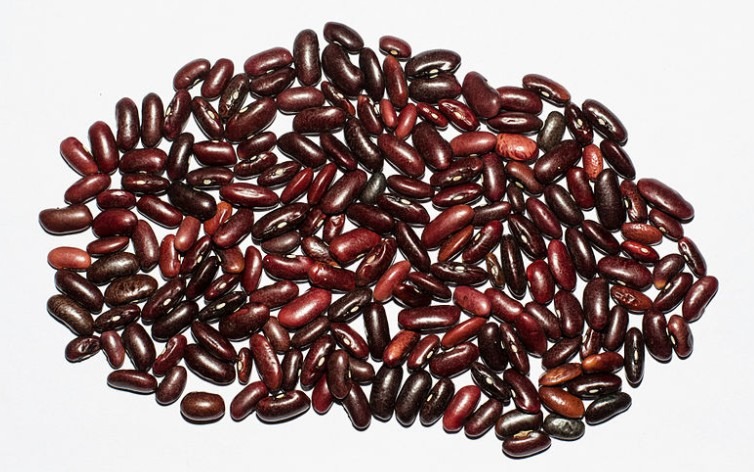Fiber is a word used for plant-based foods (vegetables, grains, beans, fruits, and nuts) and is not broken down by the body. It moves through the body undigested, eases the bowel motion, keeps the digestive system healthy and clean, and flushes harmful carcinogens and cholesterol out of your body.
Fiber, called roughage, comes in two varieties: soluble fibers and insoluble fibers. Soluble fibers get dissolved in water and help to lower cholesterol and maintain blood sugar levels. Some of the excellent sources include beans, nuts, barley, fruits (like berries, pears, apple, and citrus fruit), and oatmeal.
Unlike soluble fiber, insoluble fiber does not dissolve in water. It is the bulky fiber that is found in wheat cereals, whole grains, and vegetables (such as celery, carrots, and tomatoes). Insoluble fibers help prevent constipation. Several foods contain both types of fibers. Generally, unprocessed and natural foods have higher fiber content.
Fiber has several health benefits: it promotes digestive health and enhances the texture and appearance of skin. Fiber is very beneficial for your heart health as well. It lowers the risks of diseases like type 2 diabetes and cancer. Moreover, it is also linked with losing and maintaining a healthy weight.
Because of all these reasons, it is recommended to add more of this nutrient to your diet.
Here are some high-fiber foods that are both satisfying and healthy.
Higher Fiber Vegetables
- Asparagus
It takes 83 raw asparagus spears to fulfill 20 grams of your recommended fiber requirement. As a substitute to steamed asparagus, try adding delicately sliced raw asparagus spears to sandwiches or salads for a crunchy and sweet flavor.
- Cauliflower
A substitute to starchy vegetables, rice cauliflower, is popular with low-carb content and can be made into chips and pizza crust. It is a significant way to include fiber to your diet, but it does not fulfill the recommended daily fiber requirement.
- Artichoke
Artichoke is not a very well-known vegetable, but it is high in several nutrients and is an excellent source of fiber in the world. Per 100 grams of artichoke contains 8.6 grams, or one artichoke contains 10.3 grams of fiber.
Higher Fiber Legumes
- Navy Beans
Navy beans are used in soups and baked beans. About 1.5 cups of cooked navy beans fulfill 28 grams of your daily recommended requirement. By replacing navy beans with other types, you can make your bean recipes a little extra.
- Split Peas
Split peas are prepared from peeled, dried, and split seeds of peas. Fiber content per 100 grams is 8.3 grams, or per cup of cooked split peas, the fiber content is 16.3 grams.
- Lentils
As compared to most of the nutritious foods, the lentils are very cheap. They are rich in protein and packed with several vital nutrients. Per 100 grams, the fiber content is 7.9 grams, or per cup of cooked lentils contains 15.6 grams.
Another type of legumes, chickpeas, are packed with nutrients, including protein and several minerals. A per cup of cooked chickpeas contains 12.5 grams of fiber, or per 100 grams, the fiber content is 7.6 grams.
- Kidney Beans
Kidney beans are a well-known type of legume. Just like all the other legumes, they are packed with plant-based protein and several essential nutrients. A cup of cooked kidney beans has a fiber content of 11.3 grams, or per 100 grams contain 6.4 grams fiber.
High Fiber Fruits
The avocados are different from most of the fruits because they are packed with healthy fats instead of high carbs. Avocados are a rich source of potassium, vitamin E, Vitamin C, magnesium, and several vitamin B. They are very beneficial for health. The fiber content per 100 grams is 6.7 grams or 10 grams per cup.
Raspberries have a strong flavor and are packed with manganese and vitamin C. The fiber content per 100 grams is 6.8 grams, or 8 grams fiber per cup.
High Fiber Seeds and Nuts
- Dark Chocolate
Dark chocolate, surprisingly, is a rich source of nutrients and antioxidants. Make sure to select dark chocolate with 70 to 95% of cocoa content and avoid products packed with added sugar. The fiber content in a 1-ounce piece of dark chocolate is 3.1 grams, or per 100 grams, it is 10.9 grams.
Chia seeds are very nutritious as they contain phosphorus, magnesium, and calcium. Chia seeds may be considered the single best fiber source in the world. Per 100 grams, the fiber content is 34.4 grams or one ounce of dried chia seeds contains 10.6 grams.
Almond is a well-liked type of tree nut, which is rich in several nutrients like vitamin E, magnesium, healthy fats, and manganese. Per ounce contains 3.4 grams of fiber, or per 100 grams, the fiber content is 12.5 grams.
Higher Fiber Whole Grains
- Popcorn
Popcorn can be an excellent snack to consume if you are trying to increase the intake of fiber as it is a rich source of fiber. But if you include a lot of fat, then the ratio of fiber-calorie will reduce crucially. Per 100 grams, the fiber content in popcorn is 14.5 grams, or per cup of air-popped popcorns contains 1.2 grams of fiber.
- Oats
Oats, one of the healthiest grain fruits in the world, are a rich source of many nutrients, including antioxidants, vitamins, and minerals. They contain oat beta-glucan, which is a powerful soluble fiber. Oat beta-glucan is significantly beneficial for cholesterol and blood sugar levels. The fiber content per 100 grams is 10.6 grams, or per cup of raw oats, the fiber content is 16.5 grams.
Final Words
Fiber is a vital nutrient that helps in fighting constipation, reducing cholesterol and blood sugar levels, and boosting weight loss. The recommended intake is 25 grams for women and 38 grams for men (daily). However, many people fail to consume the recommended amount. You can add these high-fiber foods in your daily diet and be healthy.

